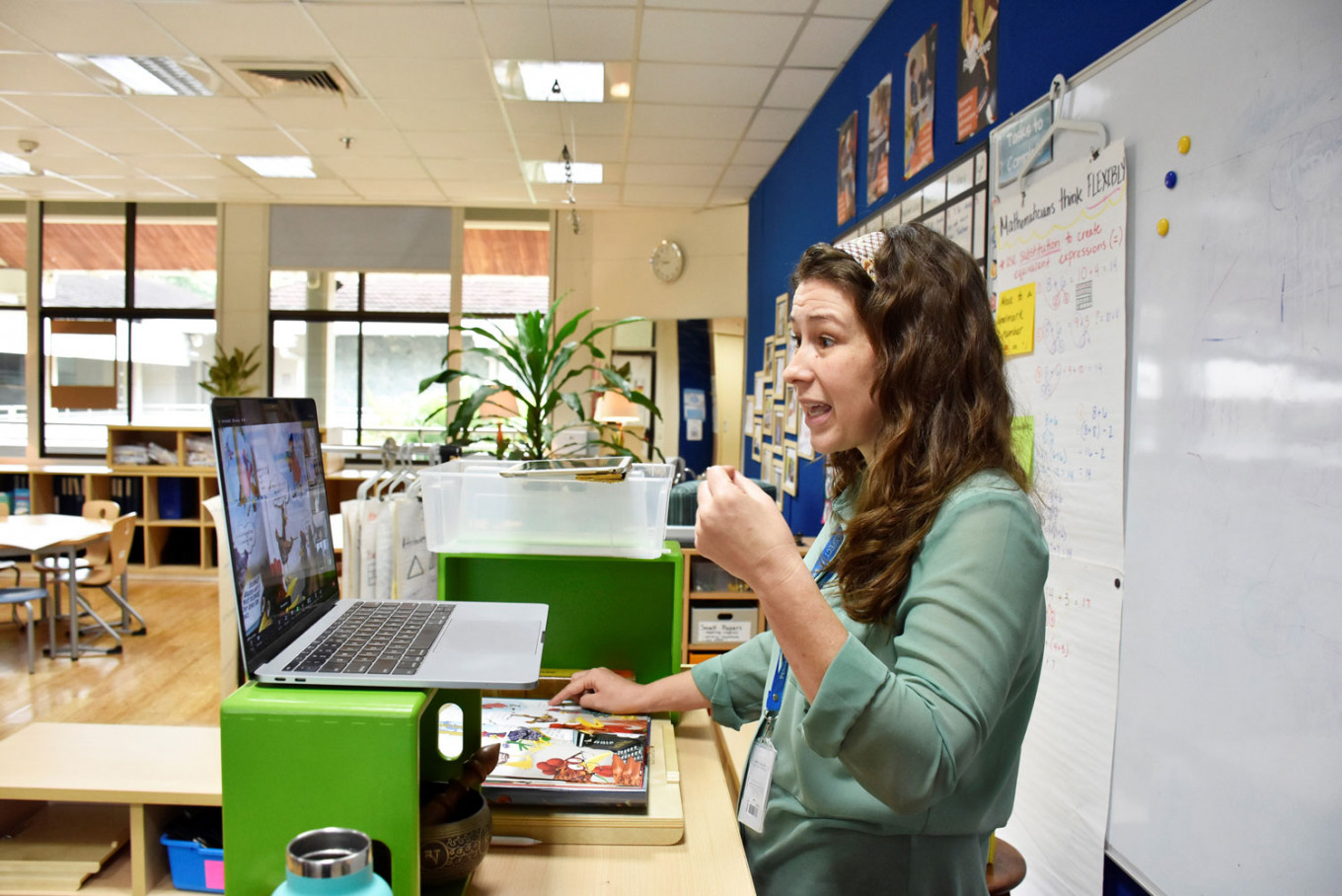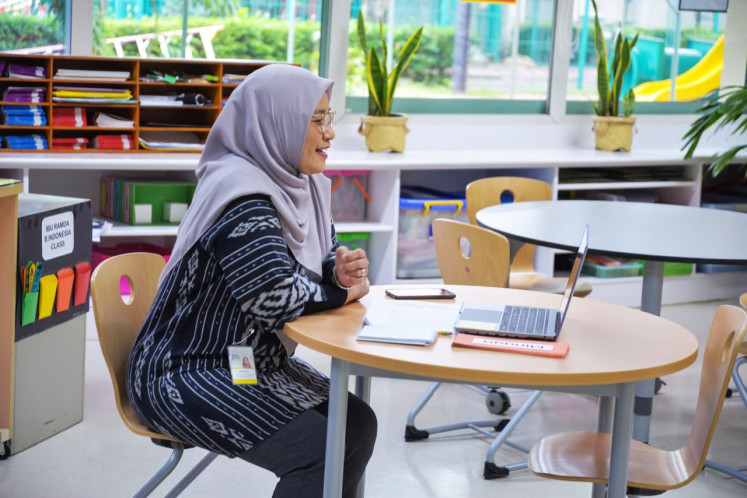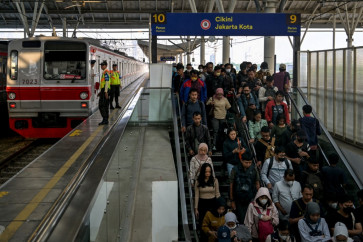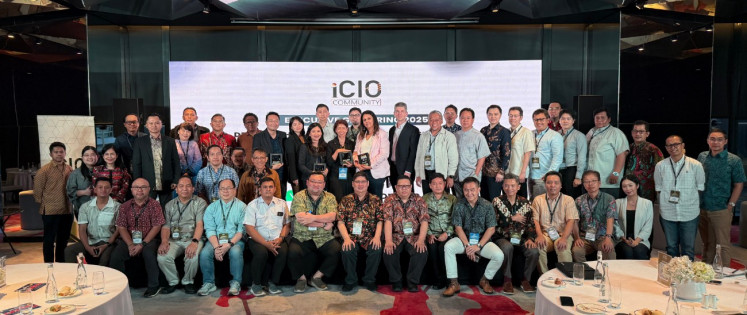Popular Reads
Top Results
Can't find what you're looking for?
View all search resultsPopular Reads
Top Results
Can't find what you're looking for?
View all search resultsStaying academically and socially engaged while learning online at JIS
Change text size
Gift Premium Articles
to Anyone
I
t’s been nearly a year since schools have had to close their campuses to keep students safe during the prolonged public health emergency, but many are still learning to navigate the intricacies of online learning and unwrap the method’s full potential.
Jakarta Intercultural School (JIS) wasted no time in taking action to protect its students, implementing its Home & Online Learning program in March 2020 to become one of the first educational institutions in the country to make the digital shift. Since then, driven by the collaborative efforts of JIS teachers from early year to high school, the program has evolved further to emphasize synchronous learning and increased opportunities for online student interactions with both teachers and peers.
“When we switched from asynchronous to synchronous, we found that more children were able to be successful with their learning,” said principal Justine Smyth of JIS Pondok Indah Elementary (PIE) School. “It gave the children the opportunity to ask questions and confer with the teachers in real time. It also took the pressure off the parents to be educators and placed that role back with the teachers.”
Prior to the pandemic, most remote education was asynchronous, meaning that students watched prerecorded lessons and completed their assignments individually in their own time. With synchronous learning, students get online at the same time with their teachers for class, which allows for real-time, direct interaction, as well as more opportunities for group work and a regular schedule to help students adjust to the unusual circumstances.
After trying both approaches at the start of its Home & Online Learning program, JIS recognized that synchronous instruction was far more effective in meeting student needs, both academic and social.
“Asynchronous […] was very difficult for everyone, parents, students and teachers. Since making the decision to go synchronous this school year, it has been excellent,” said JIS High School principal Clint Calzini. “Everyone is much happier, engaged, and therefore, learning is much more efficient.”
. (Courtesy of JIS/.)So when the 2020-21 school year kicked off last August, all classes and cocurricular activities were held live, with students learning together and supporting each other as they did while learning in the classroom, according to Middle School principal Noah Bohnen.
“Synchronous instruction had [a huge impact] on the experience for students and families. It just feels like ‘real school’ and the students have embraced this new normal,” he said.
“I was also surprised at how quickly, capably and creatively our faculty adapted their practice for [synchronous] online instruction. The classes that I drop in on are vibrant, participative and absolutely rigorous.”
At the same time, JIS recognizes that extended durations of sitting in front of a computer are neither ideal nor reasonable for its younger learners in the lower elementary grades. These students are at a stage of development that require more tangible, interactive experiences to build confidence and allow them to practice their interpersonal skills.
JIS Pattimura Elementary (PEL) School principal Jill Belammy explained that younger students were given a variety of opportunities to socialize through social Zoom and community events to give them a break from routine online learning.
“We have tried to keep the amount of synchronous time kids have to be online for lessons to an appropriate, developmental length of time,” she said.
“Keeping whole-class lessons short and teaching differentiated, small group and individual lessons were initially very challenging. But our teachers were very creative and innovative and explored ways to have children in breakout rooms [on Zoom] using multiple devices.”
All four principals agreed that the driving force behind the JIS Home & Online Learning program was the teachers, the school’s frontline workers working harder than ever to adjust and create lessons for a new medium, all the while making sure that every student stayed engaged on the other side of the screen.
“They are crucial for the success of our program, because it is they that put in the effort to make it work every day,” said Calzini.
“What is surprising is how long it takes to do anything online as compared to in the classroom. The teachers recognized this early on and had to make a variety of adjustments to their teaching to make it work with the students.
“Again, they are the ones driving the success and our high approval ratings from parents,” he highlighted.
. (Courtesy of JIS/.)Greatest challenge
The principals acknowledged that keeping the students socially engaged was the most challenging part of the Home & Online Learning program, especially to prevent them from feeling lonely and disconnected from the school community.
To address the issue, they have made it a priority to maintain as many of JIS’ traditional events and activities as possible, like grade-level and school-wide assemblies, celebrations like United Nations Day and Indonesia Week, concerts and dance performances, as well as competitions and challenges. They even maintain collaborative gatherings with other schools in Jakarta, such as the recently held JIS Model United Nations (JISMUN).
“We also check in with students by talking to them daily about how they are doing and just listening. There are times when staying engaged can be difficult, and we talk a lot about resilience at JIS,” said Calzini.
“Sometimes, like all things, when it gets difficult, you have to dig deep and push through. That said, social-emotional wellbeing should not suffer to the point of damage, so this is when parents need to step in to support them or call the school to get the support the students need.”
You can hear more from JIS principals and about the Home & Online Learning program at the next JIS Virtual Open House, to be held on Feb. 25 for high school, Feb. 26 for middle school and March 5 for elementary school. To sign up, visit: https://bit.ly/3oPVLX9












